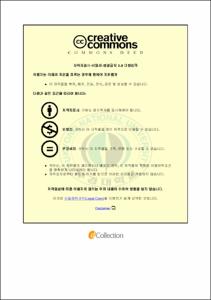비만과 최대작업지속시간의 상관관계에 관한 연구
- Alternative Title
- A Study on Relationships between Obesity and Maximum Holding Times
- Abstract
- Whether or not obesity is a causal factor of lower back pain(LBP) is a controversial issue. Previous studies have showed how extra body fat in obese people can have a negative influence on LBP through biomechanical evaluation including lifting kinematics and kinetics. However, our knowledge about the relationship is not well understood and still far from complete. At the most basic level, the effects of obesity on various lifting or task postures should be investigated. On this basis, the goal of this study is to reveal the effects of various lifting postures on maximum holding time(MHT) in both normal and obese populations. A total of twenty subjects were recruited from a university population and equally divided into two groups: a normal and an obese group(ten for each). Obesity was defined by considering both the body mass index(BMI: less than 25kg/m2(normal); over 25kg/m2(obese)) and the percentage body fat(PBF: less than 20%(normal); over 20%(obese)), evaluated by the body composition analyzer. The experiment was designed by a combination of three trunk angles (0°, 20°, 60°) and three lower extremity postures(straight, bent, kneeling) to reveal the effects of obesity. Before experimental trials, subjects performed MVC(maximum voluntary contraction) exertions in three trunk angles (0°, 20°, 60°) to calculate 30%MVC at the posture. In each trial, they were required to hold a designated posture with the handheld load (30%MVC) as long as they could.
The results revealed a significant decrease of MHT in the obese group, suggesting that obesity has a negative influence of on lifting and tasks. This could be attributed to the extra body fat of obese subjects, which cannot generate any extension moment during weight holding tasks. The extra fat even increases the external momentum generated by the torso. Based on this, we can conclude that obesity can have a negative influence on MHT, and hence reduces work ability.
- Issued Date
- 2011
- Awarded Date
- 2011. 2
- Type
- Dissertation
- Publisher
- 부경대학교
- Alternative Author(s)
- Lee, Sejung
- Affiliation
- 부경대학교 일반대학원
- Department
- 대학원 안전공학과
- Advisor
- 장성록
- Table Of Contents
- 제 1 장 서 론 1
1.1 연구의 필요성 1
1.2 연구의 목적 7
제 2 장 배경 이론 9
2.1 비만 9
2.1.1 BMI(body max index, 체질량지수) 10
2.1.2 PBF(percentage body fat, 체지방율) 11
2.2 MVC(maximum voluntary contraction, 최대발휘근력) 13
2.3 OWAS(Ovako working-posture analysis system) 15
2.4 RULA(rapid upper limb assessment) 16
제 3 장 실험방법 및 절차 17
3.1 피실험자 17
3.2 실험기기 21
3.2.1 정상그룹과 비만그룹의 분류를 위한 측정장비 21
3.2.2 MVC 및 MHT 측정을 위한 실험장비 22
3.3 실험설계 23
3.4 실험절차 및 방법 26
제 4 장 실험 결과 27
4.1 MVC 분석 27
4.2 MHT 분석 30
제 5 장 결론 및 고찰 40
참고문헌 44
부록 52
- Degree
- Master
- Files in This Item:
-
-
Download
 비만과 최대작업지속시간의 상관관계에 관한 연구.pdf
기타 데이터 / 1.29 MB / Adobe PDF
비만과 최대작업지속시간의 상관관계에 관한 연구.pdf
기타 데이터 / 1.29 MB / Adobe PDF
-
Items in Repository are protected by copyright, with all rights reserved, unless otherwise indicated.